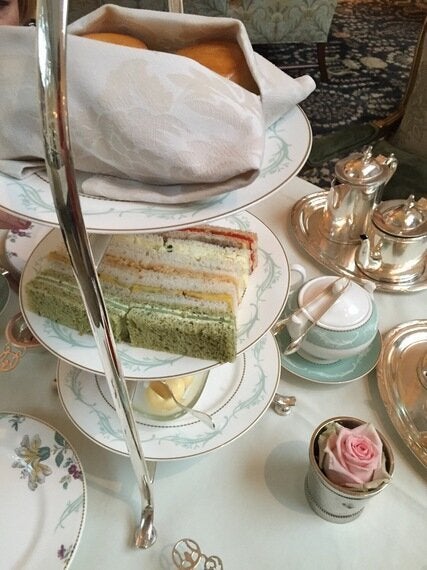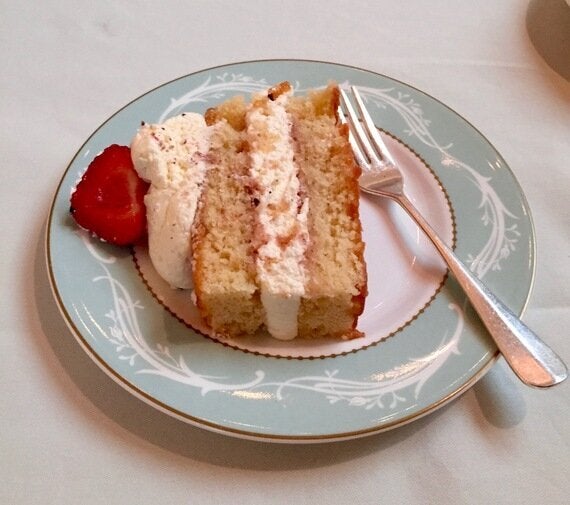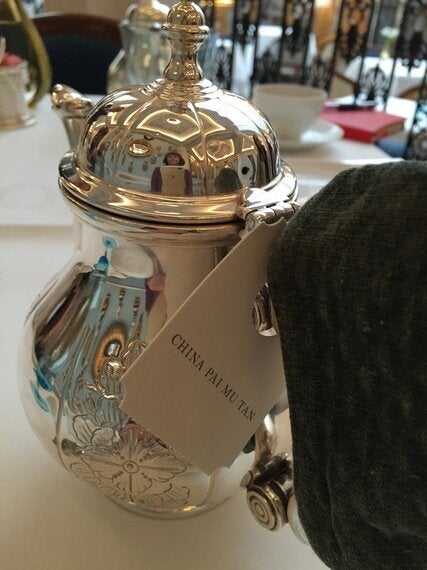
©Olivia Greenway
There is something reassuringly British about afternoon tea. When it first arrived in the London in the 17th century, tea was expensive and only for the rich. By the 19th century, everyone was drinking it, thanks mainly to cheaper tea from the new colonies of India and Ceylon (Sri Lanka).
It is said that Anna, Duchess of Bedford popularised the eating of light finger food with the drink in 1841, calling it afternoon tea. She served tea at 3pm to fill the wait before dinner at 8pm. As well as tea served on the best china, Anna introduced dainty sandwiches and cakes. It quickly caught on as a way to meet socially in the home. Afternoon dresses were much more comfortable than formal evening clothes, so it was a more relaxed affair, but there were still conventions to follow. Ladies wore gloves, the hostess poured the tea, but gentlemen, if present, passed the tea around.
Smart London hotels started serving afternoon tea from the 1850s and most have continued the practice to this day. There are many places to take afternoon tea in London, so choose carefully. I've written about places I'd recommend in the previous blog.

©Olivia Greenway
A drink of tea
Afternoon tea should not be rushed, so allow at least two hours. Tealeaves should be used - never bags - and the water must be boiling when it's poured on the leaves. Steeping time depends on the tea. The china should be made of the finest bone - highly translucent and very strong, meaning it can be made thinly - first produced by Josiah Spode around 1790 in Stoke-on-Trent. A dash of milk or a squeeze of fresh lemon may be added to the tea, which should always be sipped.
The food for afternoon tea
Simple crustless finger sandwiches, fresh scones served with strawberry preserve (not jam) and clotted cream, and small slices of traditional British cakes should be served. Patisserie is becoming increasingly popular but the writer feels cakes that are too sweet detract from the flavour of the tea. Victoria sponge, Madeira cake, old-fashioned seed cake and rich fruitcake are all perfect accompaniments. Clotted cream is special thick cream found only in Cornwall or Devon, in southwest England. The two counties argue about whether one should put the cream on the scone first or the preserve. In London, we do whichever we prefer. Scones are often served warm, tasting even better straight from the oven when freshly baked. This is not always practicable, so they may be gently warmed in the oven before serving. (Lesser establishments have the temerity to reheat in a microwave oven; in that eventuality, this writer walks out. Dusting them with icing sugar gets a similar reaction.)

©Olivia Greenway
Top afternoon tea tips:
•Have an afternoon tea instead of an early supper if you are going to the theatre.
•While walk-ins are sometimes possible, especially if there are just two of you, it's nearly always essential to book. Besides, that way you usually get a better table.
•If you are on your own, have some time to kill and are feeling peckish, an afternoon tea is a wonderfully relaxing way to while away a little time, unbothered.